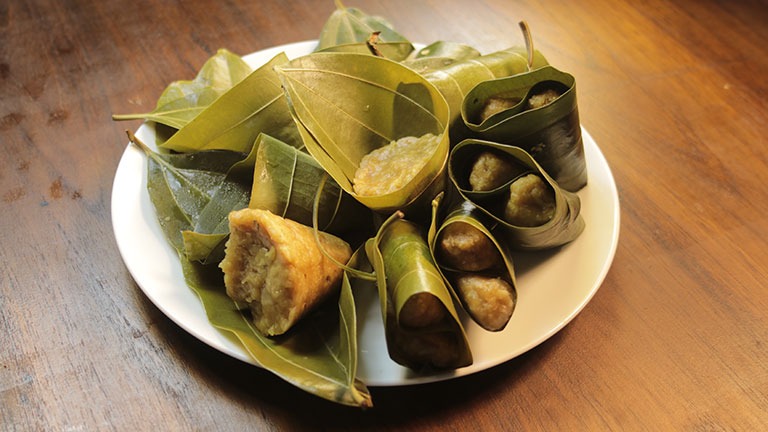November brings a gentle nip in the air as Kerala transitions from the Thulavarsham monsoons into winter. Along with the pleasant climate and the excitement of the Deepavali season, there’s a delightful fragrance that drifts through the roads during evening travels. It’s the blooming of Paala Poovu (Alstonia scholaris, also known as Devil’s Tree) But to me, this aroma never fails to transport me back to memories of my aunt, Easwariamma, making Theraliyappam during Deepavali.
This delicious snack goes by many names around Kerala. Some call it Kumbilappam, a nod to its resemblance to a kumbil—a conically folded leaf once used to drink rice porridge back in the days when farming was still the heartbeat of life. It is made with Vayana Ila—also known as Theraliyila or Edanayila, and in English, the Malabathrum leaf or Bay leaf (Tej Patha). The leaf is folded into a cone and secured with eerkkil, the midrib of a coconut leaf, keeping its shape intact. Inside, there’s a sweet filling made of rice powder, jaggery, freshly grated coconut, a hint of cardamom, and sometimes even the addition of jackfruit, making it an irresistible treat.
Theraliyappam is more than just a snack; it’s a healthy, steamed delight, often made as an offering for festivals. Its popularity spans Kerala, though the name varies from region to region—Theraliyappam, Vayanayappam, Chakkayada… However, the quirkiest name comes from Idukki, Kottayam, and Pala districts, where it’s lovingly called “Poocha Puzhungiyath“. And yes, that does literally translate to “boiled cat” in Malayalam! I have no idea why anyone thought that was an appropriate name for a delicious snack, but you’ve got to admit, it’s hilarious.
Despite the odd names, the essence of Theraliyappam lies in its nostalgia. It’s a bite of sweet tradition wrapped in the fragrant leaves of our childhoods.


Boiled cat?! That’s a new one! See… You learn something new everyday! Thanks Deepa.